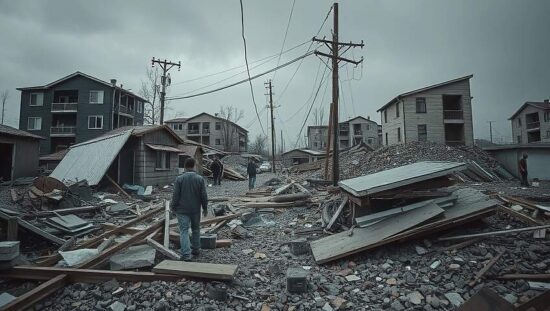Global natural disasters have resulted in approximately $131 billion in total damages during the first half of 2025, according to a new analysis released by Munich Re. Of this total, $80 billion was insured losses.
This figure represents a decrease from the $155 billion (inflation-adjusted) reported for the same period last year, where $64 billion was insured. While overall damages are slightly below the previous year’s, they remain significantly above long-term averages.
The insured losses mark the second-highest first-half total since 1980. The sole exception was 2011, when a devastating earthquake and tsunami in Japan triggered exceptionally high damages. Weather-related catastrophes accounted for 88 percent of total damage and 98 percent of insured losses, while earthquakes were responsible for 12 percent and 2 percent, respectively.
The most costly natural disaster of the first six months of the year was the extensive wildfires impacting the Los Angeles metropolitan area. Prolonged drought conditions fueled these fires, which occurred during the typically rainy season, resulting in an estimated $53 billion in total damage, with approximately $40 billion of those losses being insured. This event represents a record for wildfire-related destruction. The total and insured damages associated with this disaster are nearly double those recorded in 2018, previously the most expensive year for wildfires globally. The fires resulted in 29 fatalities.
A 7.7 magnitude earthquake in Myanmar on March 28th primarily constituted a humanitarian crisis. Preliminary estimates place the death toll at approximately 4,500 people. The earthquake’s epicenter was situated near Sagaing and Mandalay, cities with populations exceeding one million. The event is estimated to have caused approximately $12 billion in overall economic damage, with a comparatively small proportion being insured.
“Climate change is a fact and is altering life on Earth” stated Thomas Blunck of Munich Re. “Catastrophes like those in Los Angeles are increasingly likely due to global warming and they underscore the need for people, authorities and businesses to adapt to the new realities”. Prevention efforts, such as the implementation of more resilient building practices, are identified as the most effective means of mitigating future losses.





